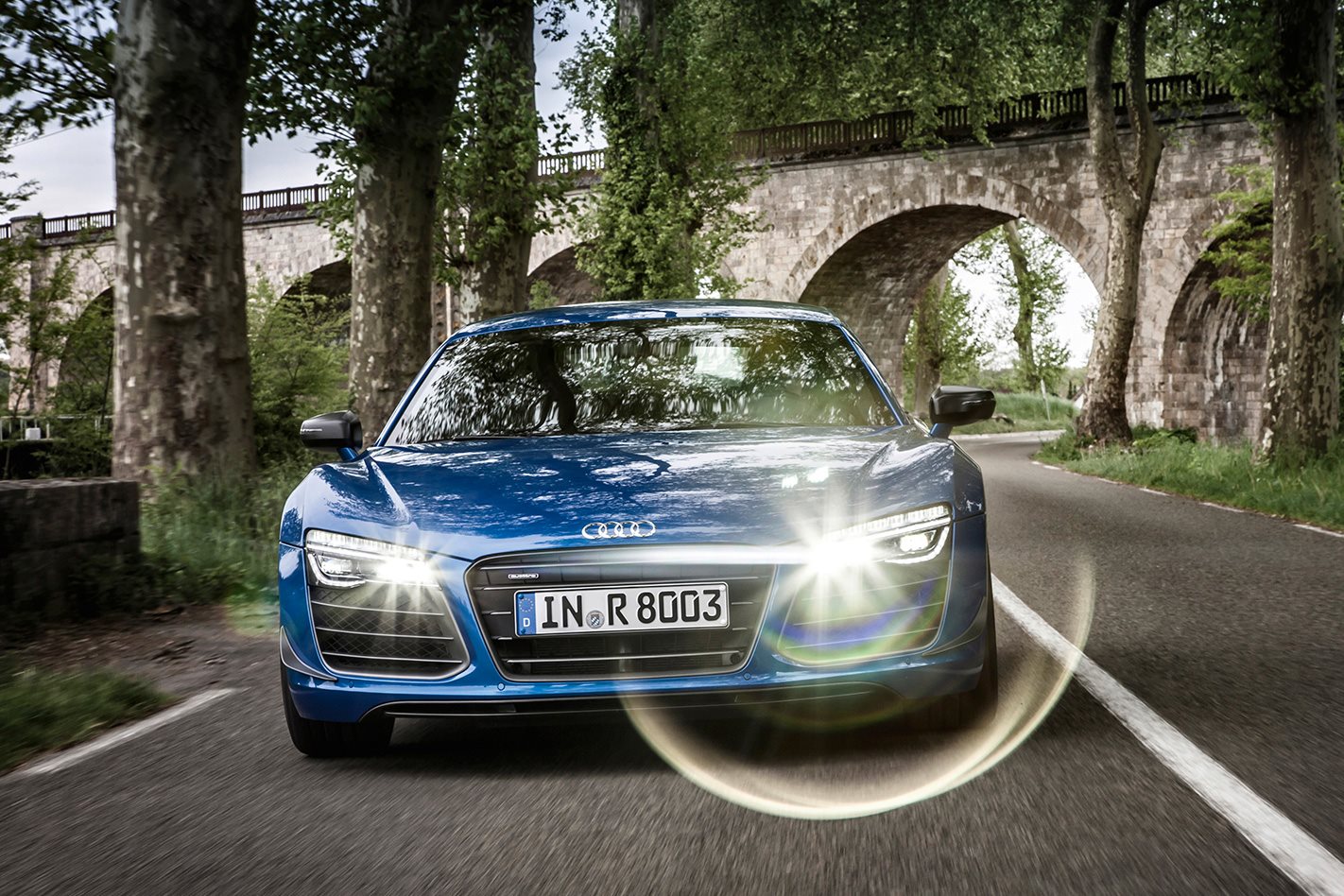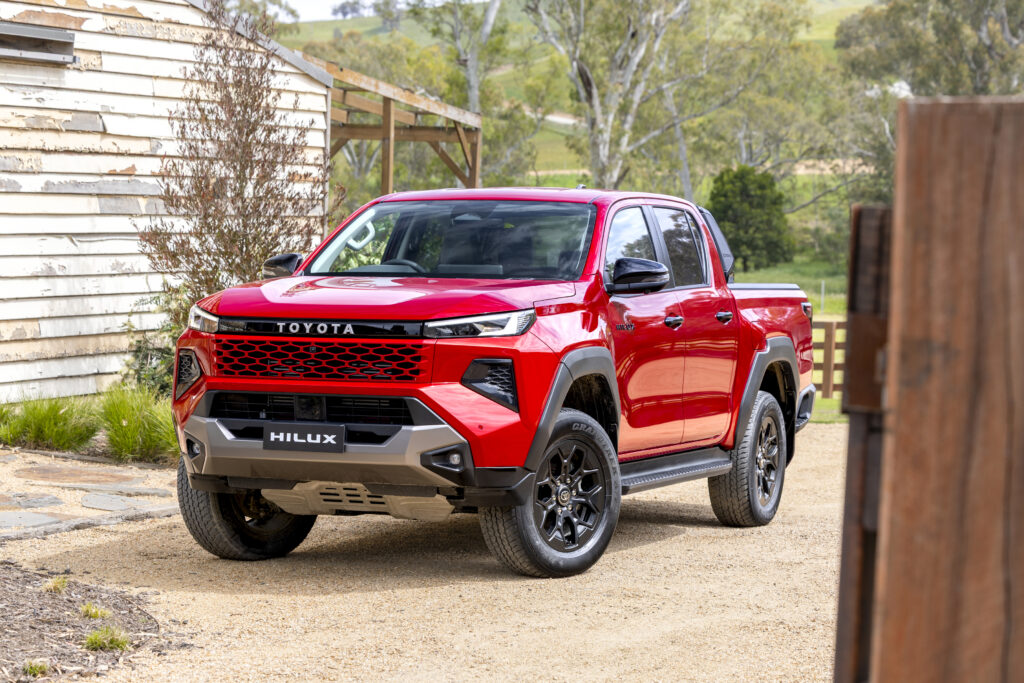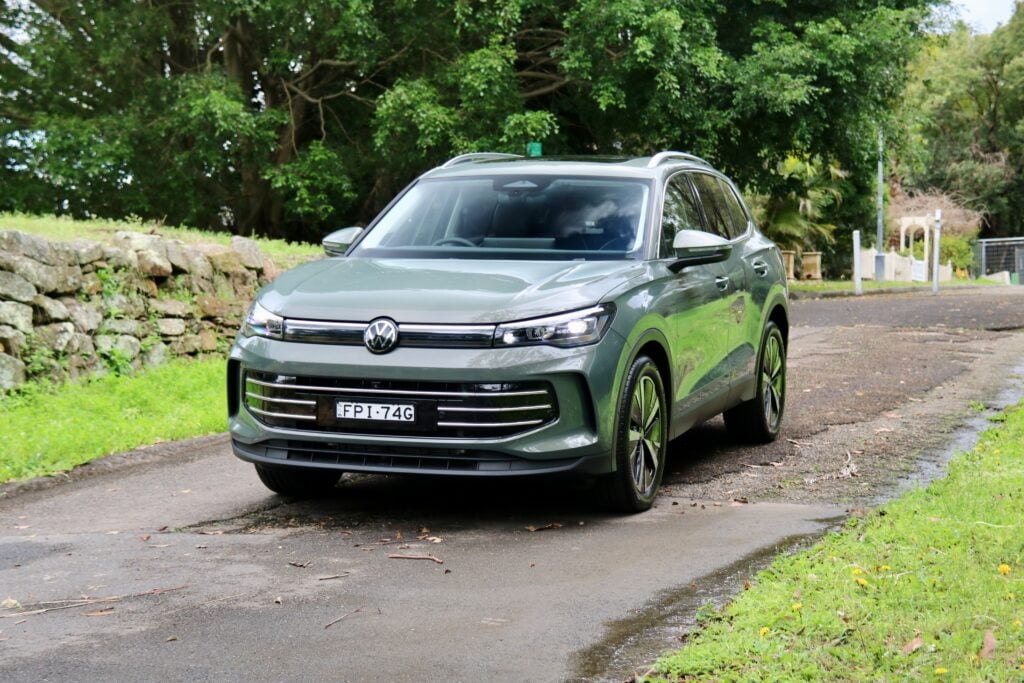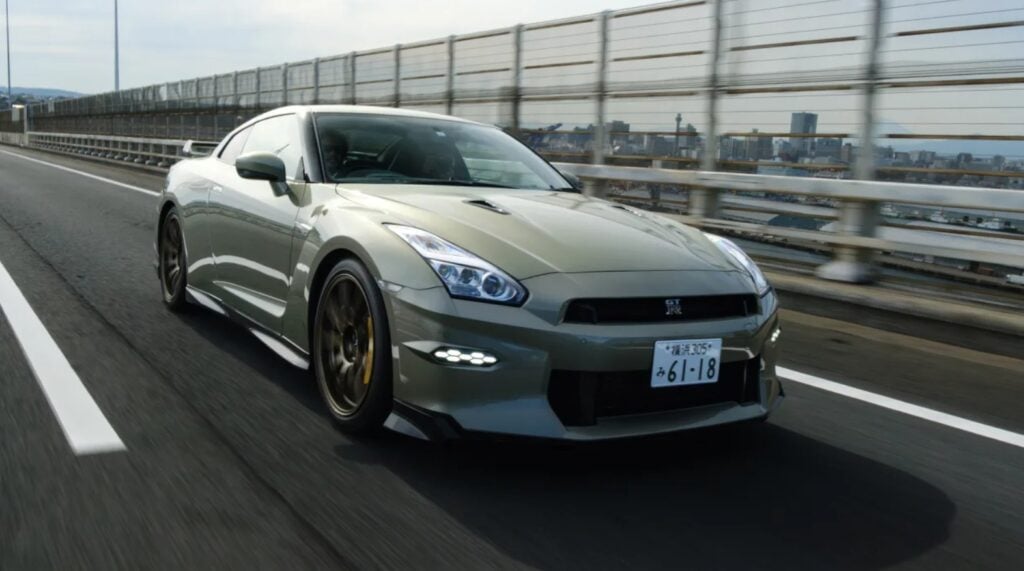A set of headlights might seem like an obscure reason for a special edition, but if a pair of laser beams gives us another chance to drive the Audi R8 we’re not complaining.
Ingolstadt’s first supercar might be approaching pension age, but only the harshest of critics could possibly says it’s past it. How could they, when the R8, in this, its last year of production, has won both the Nürburgring and Spa 24 Hour races and when it’s still bringing hard-core technology to the road?
Based on the Lamborghini Gallardo, the regular R8 was always a good thing, but then came the R8 V10 Plus, with 404kW, a slick dual-clutch ’box and less weight – it was enough to capture the PCOTY crown last year.
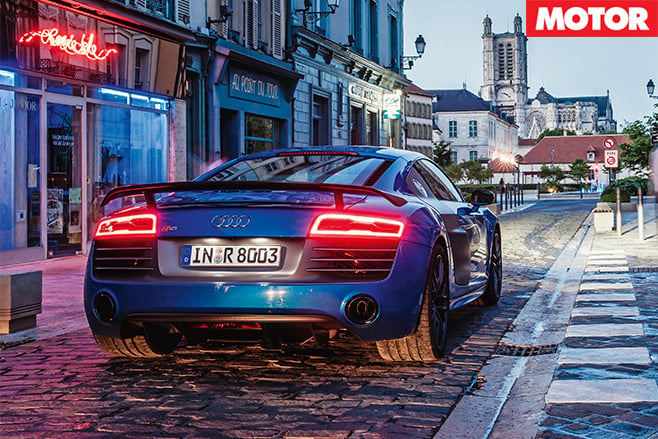
In Australia, it would cost $440,000 to get your hands on an LMX, if all three that are making their way Down Under weren’t already sold.
There are reasons you’d want to spend that kind of cash on the ageing R8 and there are reasons you wouldn’t.
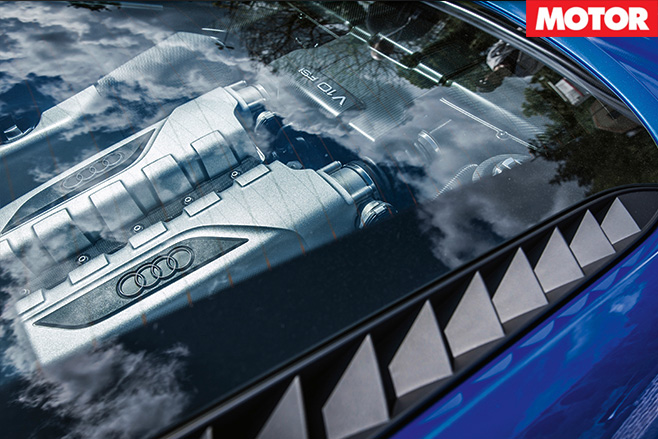
It sound strong, too, with a gruff, chesty roar at full throttle from anything above 3000rpm and a note that gloriously meanders through timbres until it’s sweetly screaming at its power peak.
You can annul that by turning off the Sport button to close the exhaust flaps and give yourself a more comfortable, less-demanding day out. But why would you?
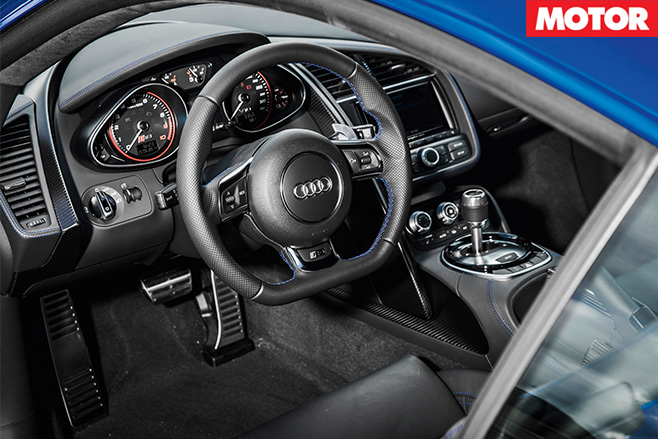
The LMX is helped by its carbon-ceramic brakes and meaty boots to bite and bite and bite and with the all-wheel drive reacting quickly, it swallows corners easily and only stops short of total engagement through slowish steering.
That said, it’s not a wicked machine. There’s none of the soaring wonder that makes the hair on your neck stand up and it doesn’t deliver the kind of drama we’d hoped for this swansong supercar.
Yes, it pulls through to 100km/h in 3.4 seconds and, yes, it should reach 320km/h (though traffic stopped us at 280km/h), but it doesn’t feel that quick. There’s no punch. There’s no awe. There’s no potty-mouth moment at any point in the rev range, even when you’re on the 0-100km/h burst.
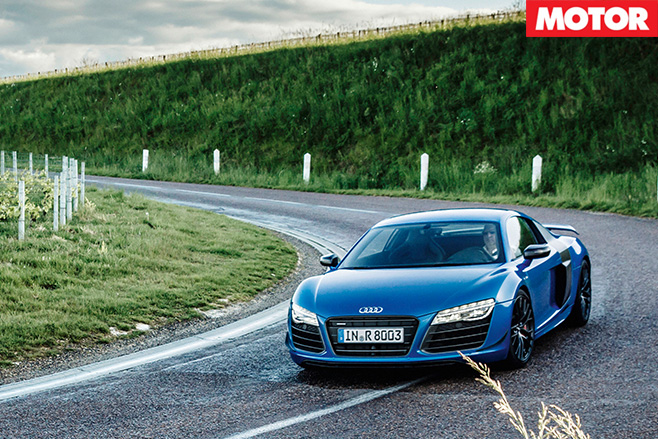
It sounds harsh, but it somehow doesn’t add up to the sum of its individual feelings, like instant throttle response, like faultless and gorgeous trim levels inside, like carbon seat shells.
Maybe it’s that the 1595kg kerb weight dampens the directness of its responses or maybe it’s just that the opposition – Ferrari, McLaren, Porsche – is finally outclassing its chassis, but it feels like $440,000 worth of engineering without quite feeling like $440,000 worth of supercar.
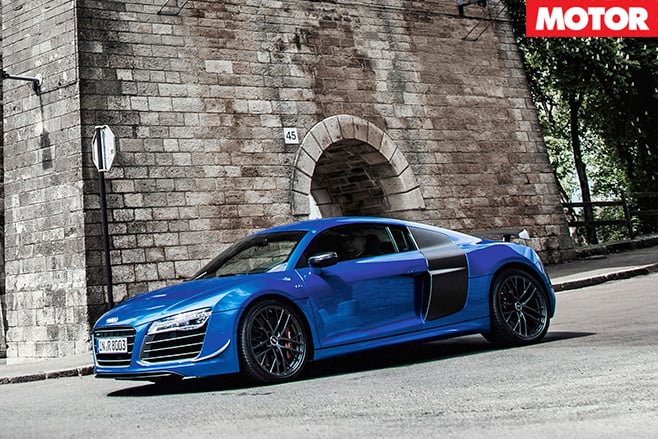
Specs
Engine: 5204cc V10, DOHC, 40v Power: 419kW @ 8000rpm Torque: 540Nm @ 6500rpm Weight: 1595kg 0-100km/h: 3.4sec (claimed) Price: $440,000
HOW THE HEADLIGHTS WORK
So, this Laser Light business. Worth all the carry on from BMW and Audi? Sort of, but it’s limited technology in its current form. For starters, no laser beam ever actually points out of the car.
Instead, the R8 LMX’s headlights use LED headlights for low and high beam (but not the Matrix LED from the upper A8 models) and then adds four Laser Light diodes for what’s effectively an ultra-high beam.
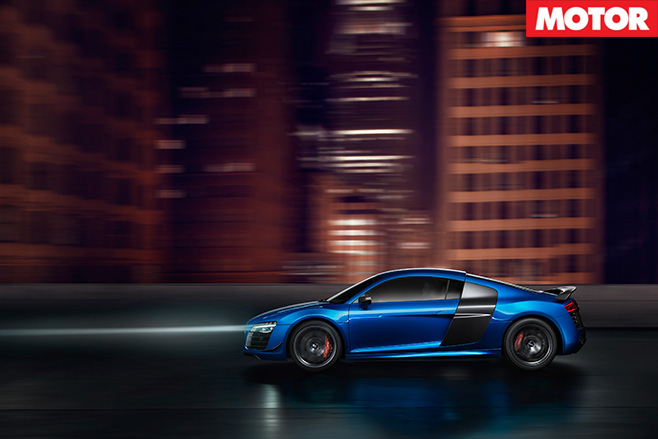
To “arm the lasers”, you flick the high beam onto its automatic setting, then let the computer and the forward-facing camera work out when it can and can’t be used. So there’s no technical way anybody could blind oncoming cars with the Laser Lights and, besides, it doesn’t function below 60km/h.
That’s good, because the lights double the intensity of the LED high beam, though not in the wide spread of the standard light. Get into some clear night air and the lights jump to LED high beam, which reaches deep into the roadside. Keep going and the lasers fire up and it’s like two long, thin strips have split the night.
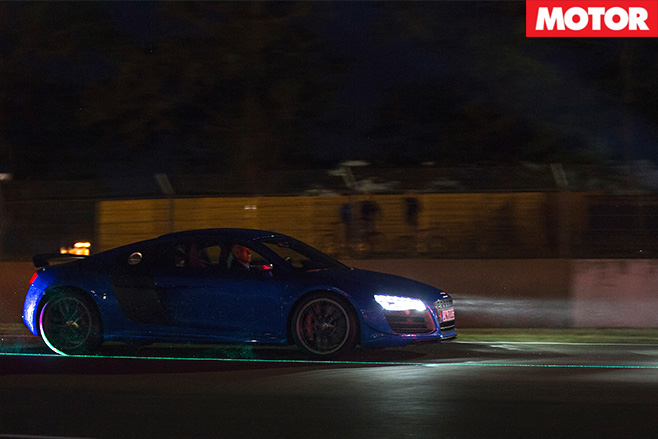
Right now, it’s an effective but limited technology, but there are big, big things to come with laser lights.

